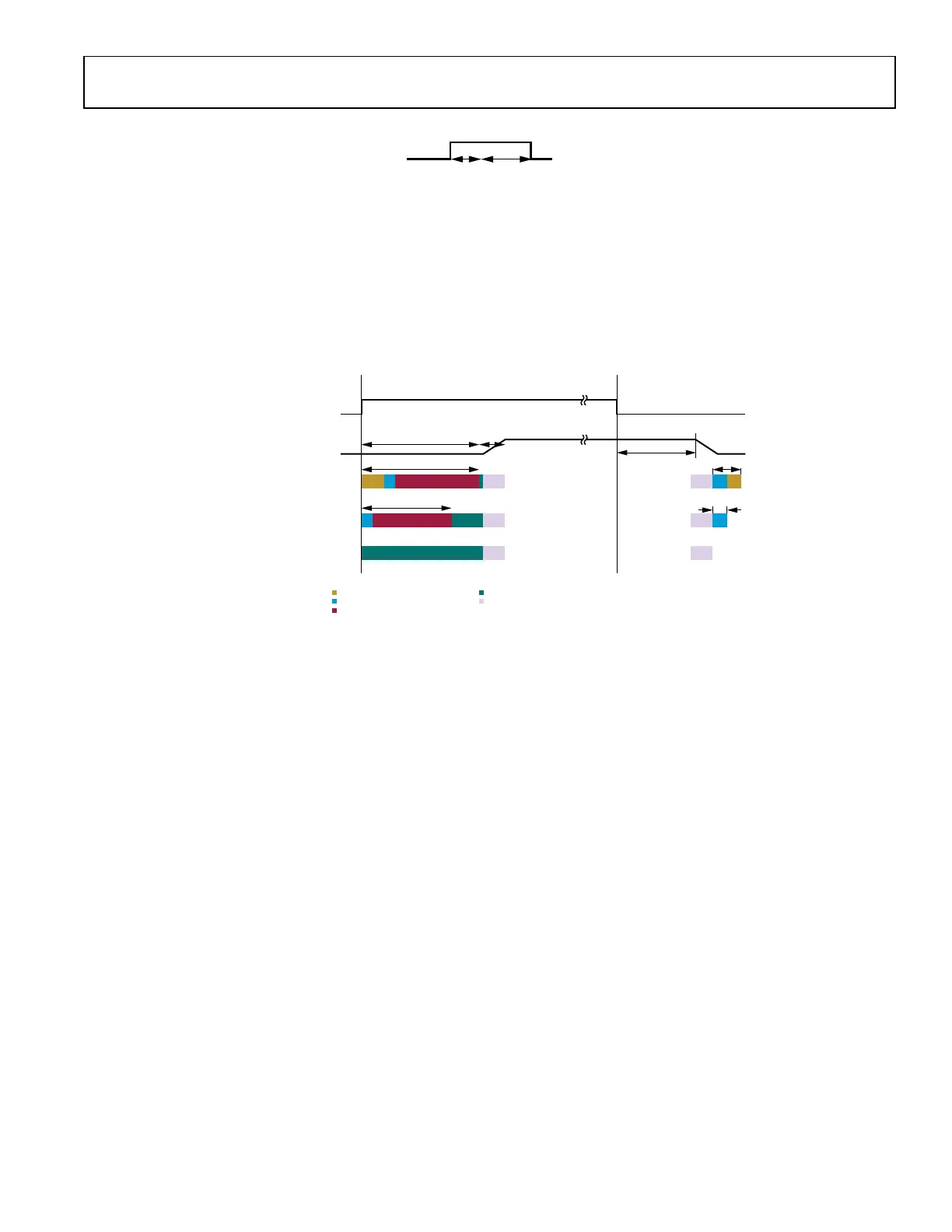Preliminary Technical Data UG-1828
Rev. PrB | Page 79 of 277
Deterministic Delay vs Phase Synchronization
Enabling MCS will guarantee the delay between the RF ports to SSI interface (or reverse direction) to be deterministic, across all
ADRV9002 devices. This ensures data will have deterministic delay (are synchronized) across all channels that have MCS enabled.
Additionally ADRV9002 also provide phase synchronization for the PLLs across multiple devices. User can choose to enable this option
so that not only the data are synchronized in time, but also the phase of the PLLs are also synchronized.
Note if choosing only MCS, which does not guarantee phase synchronization, the process is done only once and that’s after
CALIBRATED state. This means after all MCS pulses are sent and all ADRV9002 components are synchronized, no more pulse is
needed. MCS is complete and no longer needs to run again unless chip is reset.
If phase synchronization is selected, same as previous, MCS will be done at initialization stage and once complete it will no longer require
MCS pulses. After that phase synchronization will take place but this does not require MCS to rerun. Whenever PLL changes, the phase
sync will need to rerun to ensure the phase between all channels are synchronized.
To select one of the modes user can use the struct below:
typedef enum adi_adrv9001_McsMode
{
ADI_ADRV9001_MCSMODE_DISABLE = 0, /*!< Multi Chip Synchronization disabled */
ADI_ADRV9001_MCSMODE_DIGITAL, /*!< Multi Chip Synchronization for digital*/
ADI_ADRV9001_MCSMODE_DIGITAL_AND_RFPLL_PHASE /*!< Multi Chip Synchronization for digital and RFPLL phase */
} adi_adrv9001_McsMode_e;
Frequency Hopping
In the case of frequency hopping, user can choose one of the options above, to enable only MCS to have deterministic delay, or to add
additional phase synchronization. For the first option, user should only consider the PLL settling time, since there is no additional phase
synchronization required. For the second option, there will be additional time consumed and this depends on the reference clock speed
and the LO frequencies that user will use for frequency hopping.
1500
1300
1100
900
700
500
300
100
100 200 300 400 500 600 700 800 900 1000
ACHIEVABLE LO PHASE SYNC TIME (µs)
LO FREQUENCY (MHz)
24159-574
F
REF
= 400MHz
F
REF
= 350MHz
F
REF
= 360µs LINE
F
REF
= 300MHz
Figure 74. PLL Phase Synchronization Time vs LO frequency and Fref

